Networked Control Events
Networked Control Events are used to program input and output triggers (GPI/O) in your intercom system. They are designed to allow maximum flexibility and scalability in your use of GPIO events.
For example, Networked Control Events can be used to enable radio communication over IP, or send a control signal from a panel, via a matrix to a radio. The GPO can also be used to turn on an 'on-air' light, or perform any other function you require.
A Networked Control Event occurs when the input trigger and the output trigger on ports in a Channel are set to the same value.
Active Networked Control Events can be viewed in the Assignments page in the CCM.
Networked Control Events 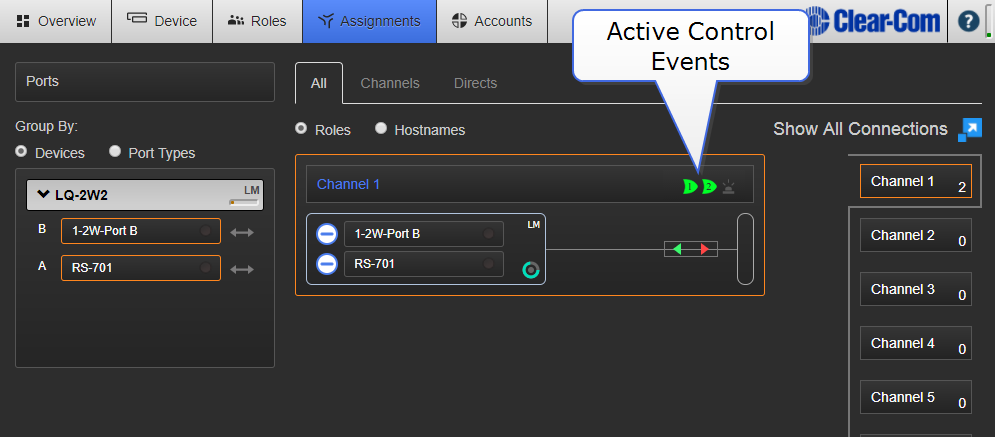
- Configure the input trigger on a port. This example shows audio entering a 4-wire port (VOX) on an LQ 4W2 device that triggers the output relay on an LQ GPIO device.
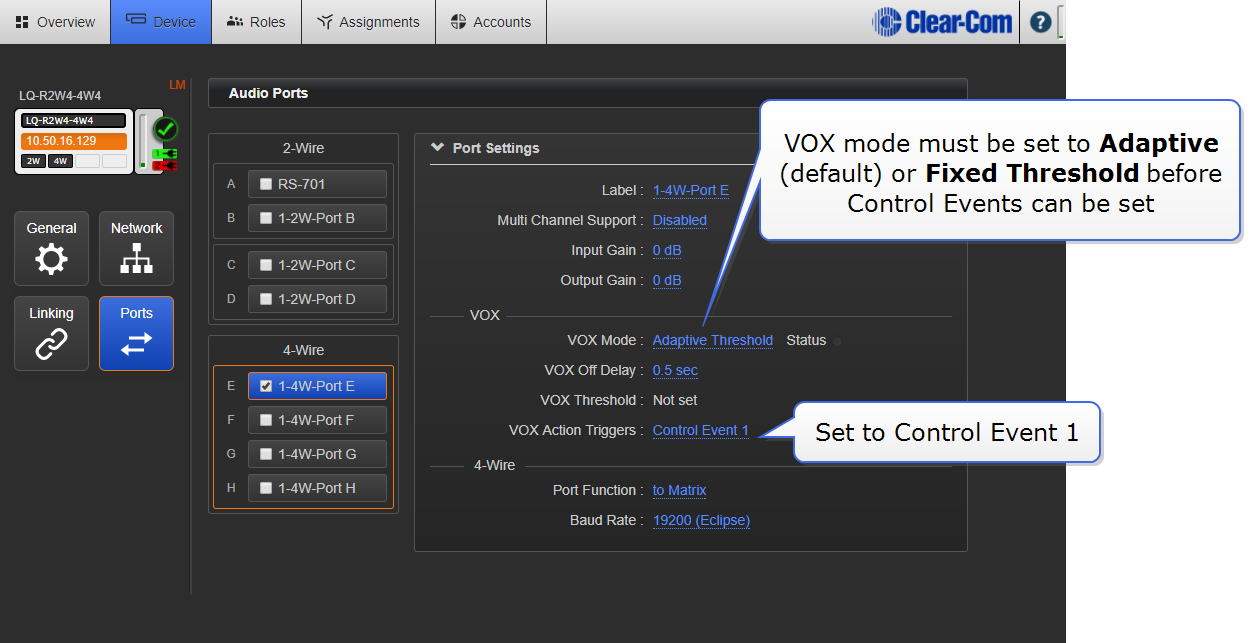
- Configure the output (GPO) on a port.
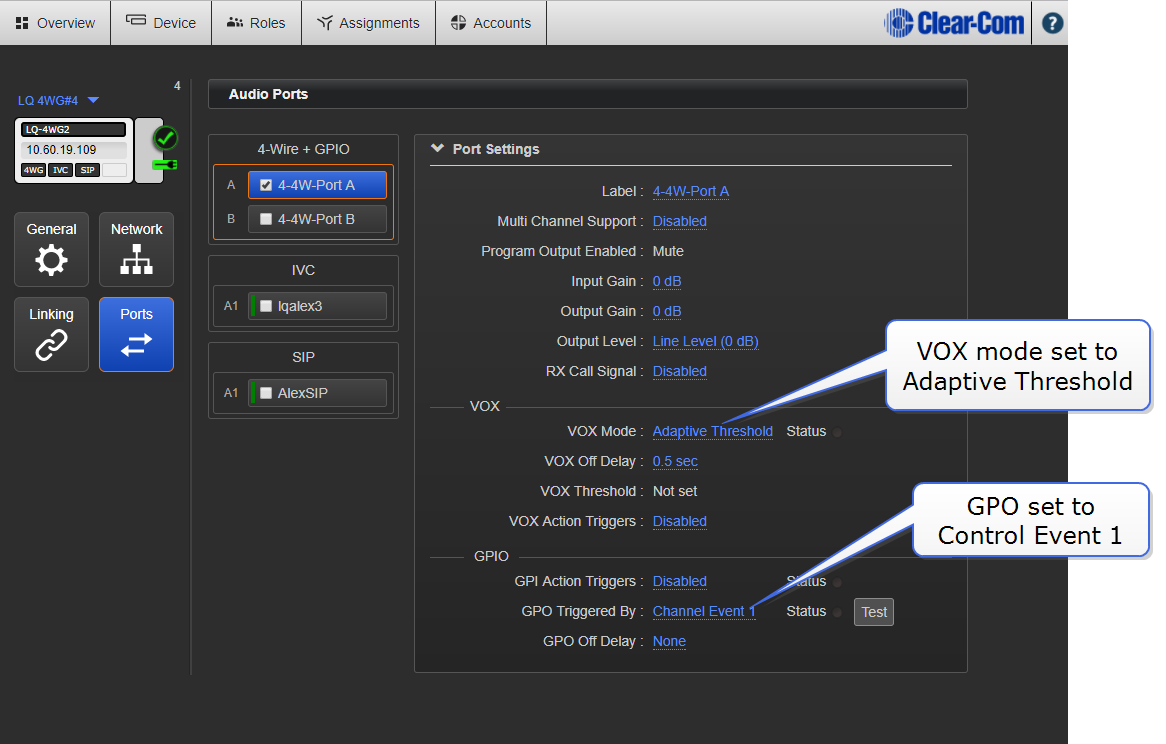
- Put both ports together in a Channel . This activates a Networked Control Event when an input and an output Networked Control Event setting match. A GPO is then fired.
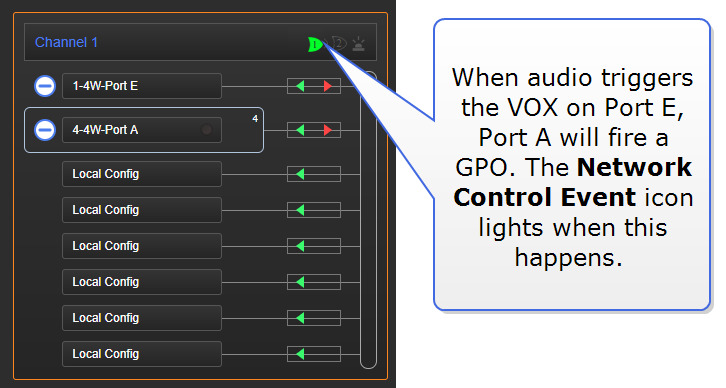
Example 1. VOX trigger 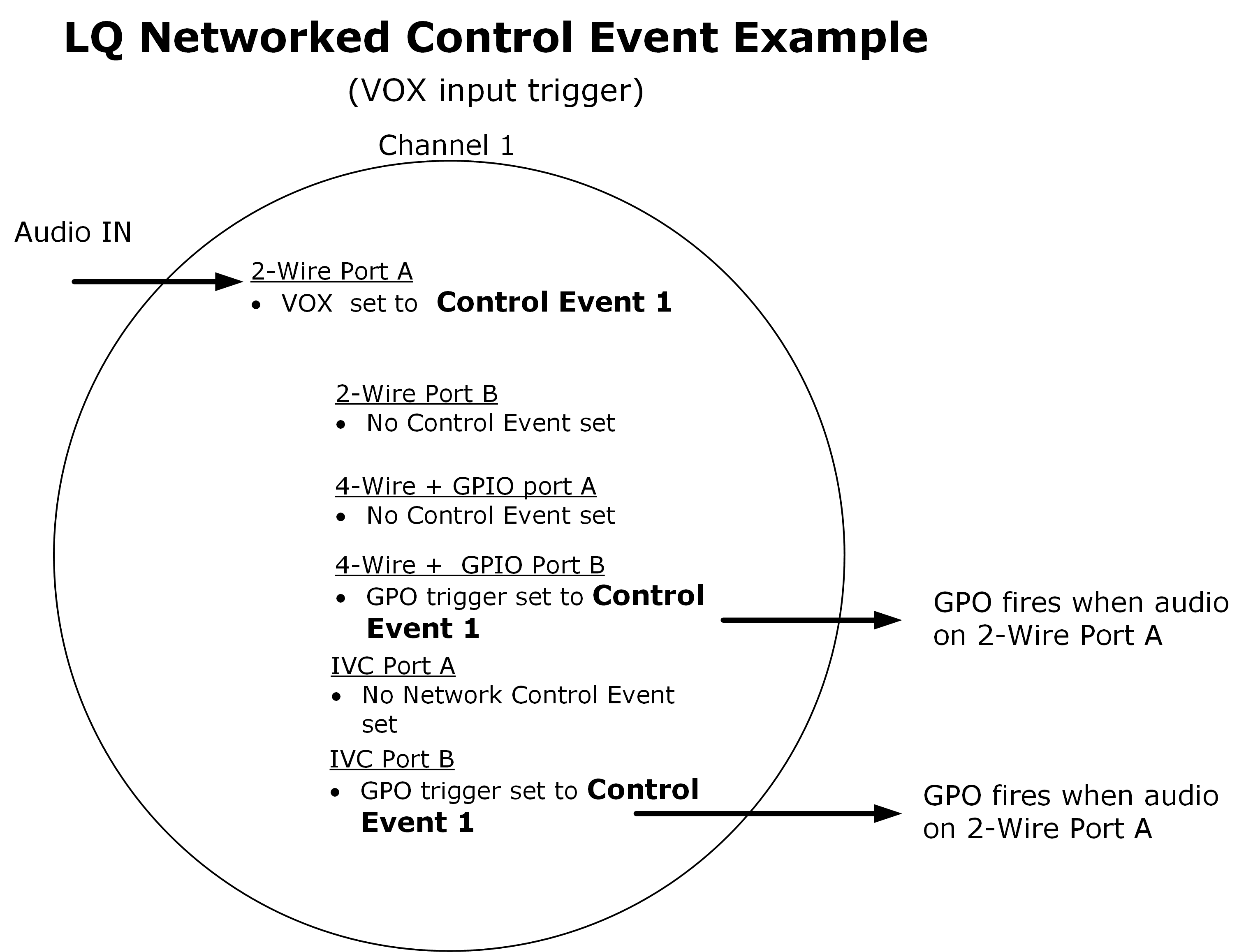
Example 2. One-to-many 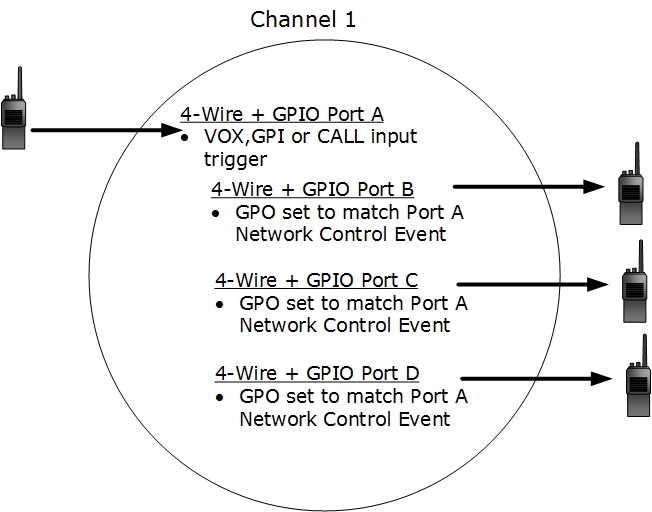
Example 3. Many-to-one

Example 4. Call Event trigger. Passing call signals using GPIO

|
Note:
|
Call signals are automatically propagated to all members of a Channel when using LQ so a GPI trigger is unecessary. However, a GPIO interface will not send a call signal trigger unless a GPO Call Channel event is set on that port. |
| LQ 2-Wire |
1. Call 2. VOX |
| LQ 4-Wire |
1. Call 2. VOX |
| LQ 4-Wire + GPIO |
1. VOX 2. GPI |
| IVC-32 |
1. Call 2. VOX 3. GPI |
Related topics
GPIO: Examples and Step-By-Step Set Up